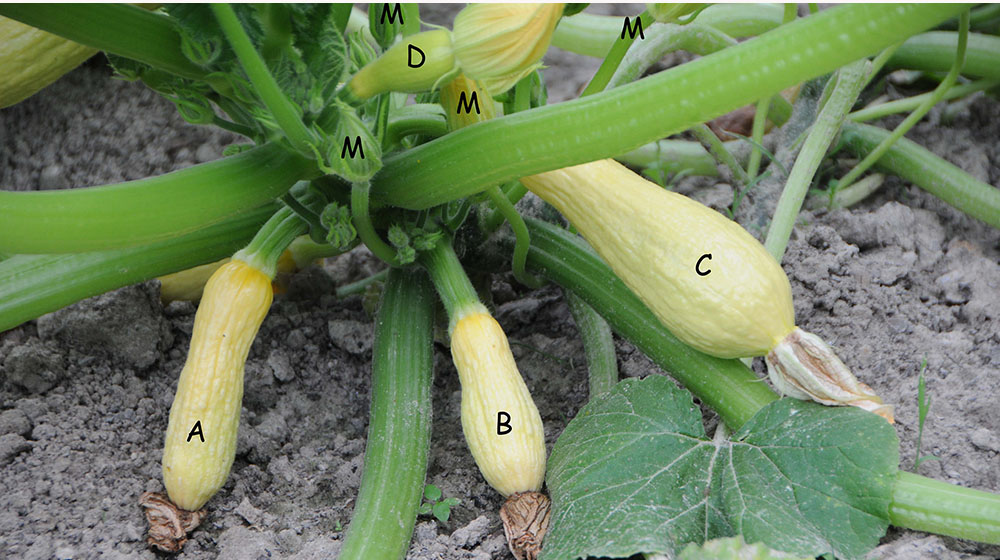Unpollinated Squash, No 13
 Unpollinated Squash
Unpollinated Squash
Cucurbita pepo
With all of the recent publicity about problems with honeybees, many gardeners become concerned when they notice that some of their squash have failed to pollinate. The two fruit in the foreground of this photo (A and B) have definitely failed to pollinate, but it is not because of a lack of honeybees or native pollinators. These fruit were not pollinated because they were the first female blooms to open in this planting of yellow squash, and there were not yet any male blooms to pollinate them.
Squash and other cucurbits produce separate male and female blooms—the female blooms are the ones that have a small fruit attached. The situation in this photo is a bit unusual because in most cases, cucurbits produce male blooms first, and beginning gardeners often become concerned when they see these first male blooms wither and fall without producing fruit. This particular planting of yellow squash produced female blooms first, a day or so before male blooms began to open.
Two days before this photo was taken, fruits A and B were the same size as they are here, and it was already evident they had failed to pollinate. At this time fruit C was the size of fruit D, male blooms were beginning to open, and both honeybees and native bees were active in the garden. There have been no problems with fruit set since those first male blooms opened. Male blooms are less obvious in this particular photo, but portions of several are visible (M).
Protect Pollinators: Pollinators are important to successful gardening, but so are insecticides. To protect bees and other pollinators in home vegetable gardens, apply insecticide sprays only when needed and spray as late in the day as possible. The approximately 30 minute period between sunset and “too dark to see” is the ideal time to apply pesticide sprays. Most bees have stopped foraging by then, and it is cooler.
Blake Layton, Extension Entomology Specialist, Mississippi State University Extension Service.
The information given here is for educational purposes only. Always read and follow current label directions. Specific commercial products are mentioned as examples only and reference to specific products or trade names is made with the understanding that no discrimination is intended to other products that may also be suitable and appropriately labeled.

